Insider’s Guide to Determine Cut Quality And Selecting a Diamond for Ideal Light Performance
The cut of a diamond is by far the largest factor that determines its beauty. The better the cut, the better the brilliance and sparkle of the diamond. If the stone is cut is too deep or too shallow, light that enters the diamond will leak through it. This is why poorly cut diamonds often look darker and lifeless.
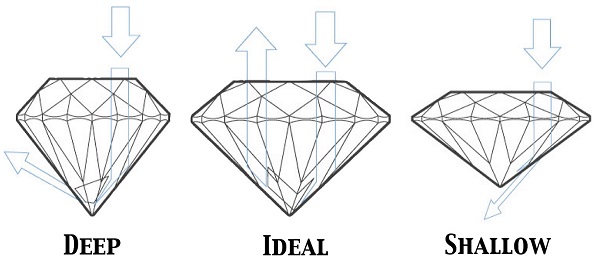
Cut is said to be the most important C as it has the greatest bearing on the gem’s appearance. Personally, I fully agree with this statement. After all, why would you even want a diamond that is dull and resembles frozen spit?
Cut is a Pre-Requisite For Selecting Any Diamond
Cut grade is the objective assessment of the gem’s proportions and finishing. In grading reports, the cut grade is assigned as a combined rating of these 2 aspects. Using the GIA system as an example, diamonds can be classified into various grades such as Excellent, Very Good, Good, Fair, and Poor. As much as your budget allows, you should ALWAYS strive for a better cut grade in a diamond.
Ok, I know you are probably thinking… “Why are you telling me this? I know that cut is important. As long as I choose a GIA triple excellent diamond, wouldn’t all my problems be solved?”
Here’s what most people don’t know. While the GIA grading system can provide a fairly good assessment of the diamond’s brilliance, GIA also allows a wide range of proportions to exist within their triple excellent ratings.
This means that 2 diamonds with GIA triple excellent ratings might not necessarily look and perform the same. Ultimately, the subtle differences in proportions and facet alignment will affect the stone’s interaction with light.
To help you decide which diamond has better performance, you need to go beyond what the grading report says and perform a deeper analysis using tangible data like videos and ASET scope images.
Beyond4Cs.com’s Ideal Cut Proportions for Round Diamonds
Video: Sparkle and brilliance of a super ideal cut diamond in real-life.
When you are looking for diamonds cut for performance, the proportions (down to every 0.1° or 0.1%) matter because of light physics. Even if a diamond has the slightest deviation in angles (e.g. a 41.2° pavilion angle), it WILL impact light performance adversely.
As mentioned in the earlier section, grading labs like GIA allow a broad spectrum of proportions and varying degrees of light performance. The fact is, most cutters know this and consciously cut diamonds for maximum carat weight yield instead of performance.
The following table of proportions is designed to help you filter out the mediocre diamonds that reside within the GIA 3Ex grading range.
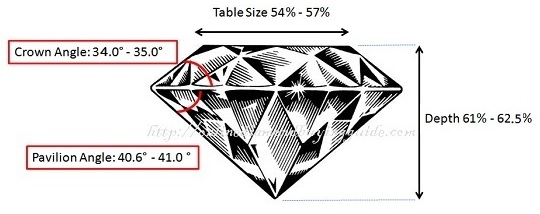
Follow these proportions guidelines when shortlisting diamonds.
| Table % | 54.0% to 57.0% |
| Depth % | 61.0% to 62.5% |
| Crown Angle | 34.0° to 35.0° |
| Pavilion Angle | 40.6° to 41.0° |
| Lower Girdles | 75% to 80% |
| Star Facets | 50% to 55% |
| Girdle Thickness | T – M – ST |
Before you get too carried away by numerical numbers, there’s something you need to be absolutely clear about. I will re-emphasize: this table of proportions is meant to be used for weeding out poorly cut diamonds. Just because a diamond has proportions that fall into those stated above doesn’t make it an auto-pick.
Why? Even if 2 diamonds have similar proportions on paper, they would still handle light differently in real life. The objective of filtering and eliminating diamonds via their proportions would leave you with a manageable number of diamonds for further investigation.
So, what’s next after you narrow down your initial selections based on the ideal proportions above? How do you take the analysis of your shortlisted diamonds to the next stage? Thankfully, there is a simple tool called the Idealscope which allows you to determine a diamond’s optics in an objective manner.
Find out more on the next page…
Related Articles
Leave A Comment

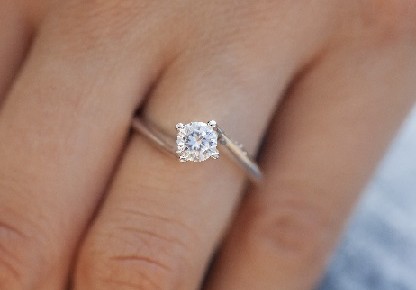

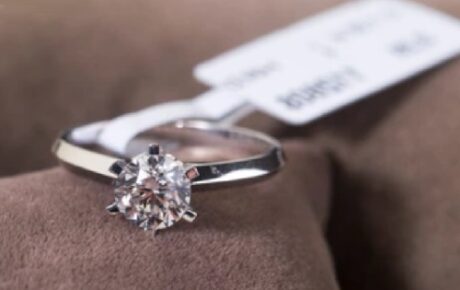
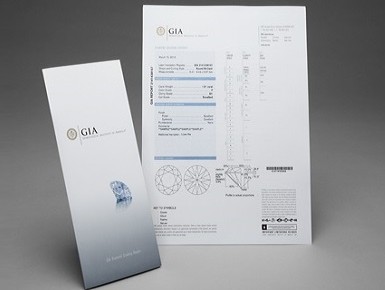









13 Comments
Hi Paul,
Thanks for what may be the *best* diamond learning site out there, no joke. I’ve been researching about a month now, and I wish I had found your site earlier! On the other hand, I’m just glad I haven’t bought anything yet. I’ve already avoided many, many pitfalls, and am now aware of more due to your site. This brings me to my question:
I’m now using the HCA to reject what seem like “good” stones based on the GIA report. I’ve rejected numerous Triple Excellent stones and am beginning to wonder if finding a 0-2 HCA is out there. I’m using mainly James Allen because I want to see the 360 views.
I’m looking for an eye-clean (SI1, H-I, 6.5 to 6.8 mm) stone that has an HCA of 0-2 and shows a nice scope image. If we email or PM I will share my budget with you.
Can you help?!!
The good thing is I am not in a rush and have time, so I’m starting early. But I also have a science background and so am unwilling to succumb to marketing tactics!
Cheers,
Ben
Thank you so much for your insight! I am getting close to proposing and trying to find the right ring. I have no idea what I am looking at. I saw one that I liked a lot and it seemed like a good price, but I can tell now that the diamond was too deep. I’ll have to use this as a reference guide.
I am having a hard time finding a well cut heart shape diamond. Base on your suggestions, the diamond cut calculator (HCA tool) has “rejected” most of the diamonds with fish-eye problems. I am not sure if there is another set of criteria when it comes to heart shape diamonds, or it is just hard to find.
Would you kindly provide some guidance?
Thanks!
The HCA tool is not applicable to heart shaped diamonds. To find out more about choosing well cut hearts, read this: https://beyond4cs.com/shapes/heart/
There’s also an important misconception about using “diamond cut grade calculators” or “diamond cut score calculators”. While it is true that proportions are a factor that affects the amount of light return, it is just a piece of the puzzle. Many of these “diamond brilliance calculators” are algorithm-based and/or based on theoretical ray tracing mathematical models.
More importantly, these calculators make unrealistic assumptions that facets are perfectly cut in real life. They rely on rounded-off measurements of diamond proportions found in grading reports which makes analysis inaccurate. That is to say, if you feed the calculator with unreliable data, you get unreliable results. Garbage in = garbage out.
The best way to assess a diamond’s light performance which doesn’t depend on such assumptions is via the use of ASET scope where the light return signature of a diamond is captured.
I am about to buy a 2ct marquise diamond. You said that CUT is very important but they don’t specify the cut in the marquise. The one I’m looking is G/SI1, no fluorescence, GIA, in my area. I cannot afford Allen’s prices so could you tell me what I should look for in the diamond?
I’m afraid you are just setting yourself up for disappointment if you shop with this kind of mindset. Read this: https://beyond4cs.com/engagement-ring/beware-of-cheap-diamond-deals/
Hi Paul. Two jewelers (Jared & small retailer) have informed me that with stones smaller than 1.00 typically aren’t certified and GIA doesn’t provide a reporting on the 4 c’s. Is that right?
You must be joking right? The jewelers are telling you diamonds smaller than 1.00 carat aren’t usually graded and want to sell you ungraded diamonds? It’s a load of bullshit and you better RUN.
Hi Paul! I want to thank you for the incredible info you provide in this website. I was one of those who thought they were doing pretty amazing by only comparing diamonds in BlueNile based only on the 4c’s and ct …
If I’ve understood correctly what you say.. would you think this diamond is a good deal based on price/HD image/aset and HCA of 1.4? https://www.jamesallen.com/loose-diamonds/round-cut/0.34-carat-i-color-vs1-clarity-ideal-cut-sku-1299491
I am unsure about being ready to buy one (maybe this one) or keep learning and comparing to pull off a better deal… Anyways THANK YOU!
This is a well cut diamond for light performance. Pricewise, it’s what it should cost for a diamond of such a calibre.
There had been some questions on a online program called Holloway Cut Advisor that I had repeatedly receive via email. One common problem is that people are consistently using the software in the wrong way. Here’s my stand: ditch the software because it usually does more harm than good in today’s market.
For more details, read this article to find out why the HCA software can lead to disastrous shopping outcomes.
NOTE: THE HCA TOOL WAS CREATED MORE THAN A DECADE AGO IN AN ERA WHERE VIDEO TECHNOLOGY WAS ALMOST NON-EXISTENT ON THE INTERNET AND E-COMMERCE WAS AT ITS INFANCY. TIMES HAVE CHANGED AND THE USEFULNESS OF THE TOOL IS DIMINISHED. NOWADAYS, YOU SHOULD NEVER RELY SOLELY ON THE HCA SCORE TO MAKE A PURCHASE. IT’S JUST SILLY TO DO SO.
And if you are already shopping at a place where you have videos or other tangible light performance data like ASET, those information are more useful than whatever numbers the HCA tool spits out. Just ignore using the tool all together.
If you are still interested in using it, click this link to learn how to use the HCA tool.
Generally speaking, I would recommend you to reject stones that score higher than 2.0 on the HCA. A diamond with a score of less than 2.0 passes the first test and warrants a closer examination. Remember, the Holloway Cut Advisor is a “rejection” tool and not meant to be used a “selection” tool.
Unless you are buying a diamond blind without any data, the HCA software actually confuses users more often than helping people make smart purchasing decisions.
Hi Paul,
Used your provided list of proportions for my (intensive) search, so glad to have it. Do the separate proportions effect each other? For example, if the depth is on the lower side of the margins, should the table also be? Or doesn’t that matter? I’ve emailed you a list of 4 diamonds that match your given criteria, hope you can help me by advising on which final one you would choose. Thanks a lot!
Not necessarily. For higher crown angles, they tend to work with shallower pavilion angles. For table size, it mainly affects fire and light leakage under the table. But the thing is, proportions are just a guideline. You will need the tangible video and scope images to confirm performance.